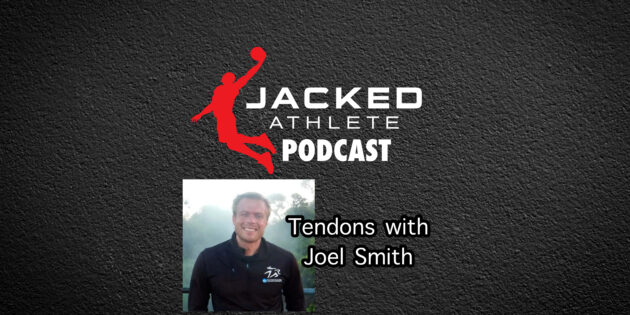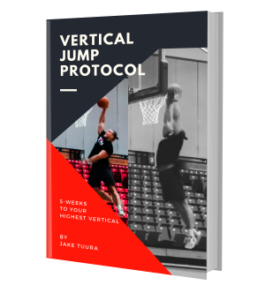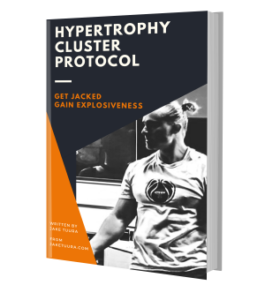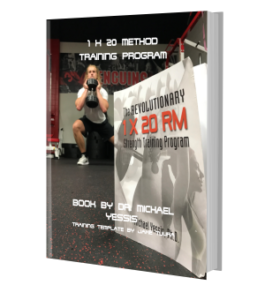https://podcasts.apple.com/us/podcast/jacked-athlete-podcast/id1462537296?i=1000690969415
“The thing to always remember is kids are so efficient. Like, I take my kids rock climbing and they, their lactate system, think a child’s lactate system doesn’t really develop as well till, I don’t know, like their early teenage years or something, or like 10 or 11.”
“The Achilles to a runner is like fingers to a rock climber. And I would actually say fingers are even, even more just because I mean, the Achilles is everything for running and jumping, but rock climbing, is so apparent and it’s even more limiting in the sense that I think that it depends on your ability.”
“And so this was actually the first year that I experienced a little bit of finger tendon issues. and it’s because there’s different types of tendon issues and fingers. It’s like, what is it? Like I get like a burning in one tendon, the other finger swelled up a little bit. So you have different, just different things. And the fingers are so complex too… all the little intricacies of the hand are so much more complex than a knee it’s kinda like a tree you know where you have the trunk and it’s kinda basic and the further you get out things just get it’s like the branches they just get really complex.”
“If you rock climb, you will instantly put within a month of rock climbing, probably five to eight pull-ups on your pull-up max. And let’s say you start with 10 and you didn’t and you do your typical, you know, two times a week, you’re doing three sets of 10 or four sets of five pull-ups. If you start rock climbing, you will break plateaus a hundred percent. It will happen almost every time. So the question is, well, how do I take these principles of climbing and apply them to any training program, be it sprinting or jumping or a strength program, what exists in climbing that I’m not getting that can plug in? To me, it’s variability. It’s a lot of isos. It’s fun and it’s very meaningful. And there’s also danger. It’s like, crap, if I fall off the wall thing too, you know, that exists. So there’s a lot of things. And there’s also lactate that swirls in there. So there’s a lot of really cool pieces that I’m constantly thinking, how could I put this into a jump training program? How could I put this into a sprint training program? And then of course there’s the isometric tendon strength that comes with it as well.”
Volume: “Yeah, it’s what is in the volume, right? Because you could do 200 pull-ups a day and you would improve massively. But how much mental effort and willpower does it take to do those 200 pull-ups is one thing. Because if you do, let’s say it took you an hour to do 200 pull-ups versus climbing for an hour. The climbing, you literally spend almost no willpower… So because climbing is fun and you don’t have to spend willpower, it makes it easier.”
“But to me, that just speaks to why I think the next evolution in training is the full integration of the mind, body, spirit, you know, the meaning, the games, the natural pieces that exist. And the more we can find those things, I think the more movement practices we partake in, the more we see those things show up and we just know, we get a natural feel of how to get that in training it’s like there’s here’s the training that doesn’t expend willpower here’s the train that does expend willpower and and how can we make the most of that.”
“If I go run 20 miles a week on, the road, it’s not good for me athletically. Like things just really go south. if it’s on the trails, it’s way better. And if it’s interspersed with hill sprints, like my favorite is going and running for like a quarter mile and then do like four or five hill sprints, like 60, 80 meters, and then go run a little bit more. Cause it’s enough of a wave that like, I need that running.”
“And I just find that, you know, the more you just do formal lifting, your body just pancakes. And it can be good for like, you know, even a two leg jump, a standing bird and all that stuff, but a single leg jump.”
Protecting tendons when getting back into rock climbing: “It’s just finger strength is so low early in the rock climbing. Like the first week, I know I just have to take it easy and not even try like the top two grades I would try the previous year because not because I don’t have like at least some level of pull up strength or pulling strength. It’s just I know, if I go for those climbs, I’m going to mess up my fingers. Like I just it’s just a given. So I have to lay off on that.”
“In my mid thirties, I would say going out and sprinting and doing like jump workouts and plyo workouts wasn’t fun because I just had got the point where I just couldn’t… I couldn’t move the needle. In fact, I was being confronted with a very great demand of work life and family life and kids. And I’m getting older and I can’t adapt because of all this extra stress. And I’ll do a workout I used to do and recover from it. And my vertical is down two inches.”
“I find injuries by and large are usually timing issues, like minute, like maybe the hamstring fired one thousandth of a second later than it was supposed to… And I’m convinced that fatigue causes these little timing or stress, game stress, perception loss, these little mismatches in internal timing in your, because how else do you explain how athletes who should be injured, right? Like, oh, you have this crazy anterior pelvic tilt and this is all wonky, da, da. But they can time it. They can still keep it together. And so I do a lot of stuff with metronomes and music to make sure like timing is synced up and I find that that really helps.”
“A lot of distance running coaches have people run to a metronome. Really boring by the way. It’s like tick, tick, tick, and you have to run to a tick, tick, tick. That’s really boring. It does give you a basic sense of rhythm. So you could also do that to hopping. I know a lot of people do that for hopping. I think that’s good for tendons as well.”
Flywheel for patellar tendon: “My latter years at Cal for kids who had knee stuff was heels elevated high rep flywheel squats. So good. It was like, that was the sauce man for the knees. And yeah, I don’t know what was happening. You know, a mix of blood flow. It’s a steady pull too so you can’t like yank on it like you know so it was just awesome.”
Finger tendons vs. Achilles tendons: “You get a lot of rock climbers who are just very thin individuals and probably more slow twitch and probably not super forceful. But they just hang on the walls all day, and they become very good climbers and their fingers become insanely strong, whereas it’s interesting like i have a lot of high jumpers i work with who also have to be distance from this just because it’s just high school and it’s just i don’t i wish i had some more volleyball and basketball players but i don’t i guess are recruiting those kids but it’s kinda interesting because you see people who jump with their pure elasticity they don’t have the sprint power they don’t have those things and s you know i i can say i could see inside the tendon to know i i don’t know but I think that it’s probably people whose tendons have been maxed out as far as they go with the volume. I could tell you with certainty that the plyometrics would give them another gear in that stuff. Yeah, but climbing, don’t know. I don’t know enough to say, but I can tell you I do think people who just live in the rock climbing gym, even if it’s not high intensity, I think their finger development probably comes a lot further than just what distance running will give you Achilles. That makes sense to me.”
“I don’t think the wrists are meant to load and unload force like the Achilles… But if I’m training a group of athletes, I don’t know, like, like baseball players, especially tennis, like if I’m training tennis players, like I’m not, look, I’m not trying to be soft. Like I will push you. I would see no need for someone like a tennis player where your wrist is your lifeline to do like a drop push-up and saying like it’s just i just think that it’s just not worth it in that situation.”
“So I had jumper’s knee all way till my senior year of high school. And then I started doing deep squatting, like relatively heavy, like not necessarily, like sets of 10, like 60 % working up to 85 % of sets of five. And honestly, I didn’t see knee issues for like two or three years after that. And that was the only change.”
“Single leg jumpers compared to double leg jumpers just don’t last as long.”
“I’d sprain my ankle, my right ankle once, maybe twice. And I think between that, my right calcaneus started to jam up. It didn’t move as much. And I remember doing track practices 26 and my Achilles would hurt the whole first 30 minutes and then it would calm down enough to jump. And I would just make it through it.”
“It was David Gray showed me some wedge work. He showed me how to mobilize my calcaneus on zoom. This was before David blew up too. This was like, he was just helping me. And right after that, as soon as that happened, I was really free. And I think part of it was the mechanical and I was thinking part of it was also like just the psychological, like the full integration of all that.”
Tendon variability: “So nowadays, my main way I work with it and get it better is I do a lot of variable, the same way rock climbing is rock climbing. If you did the same holds over and over again, if you had the same two finger holds and ran that the same pole way, you would mess up the pulleys in your fingers for sure… It’s because you do a million different little holds and angles and trajectories that the hands can be robust. And so that’s to me, like why I like running with barefoot shoes in a creek bed, because you have a million little rocks and different angles. And I found for a long time, that was the jam. Like that worked better than anything better than any lifting protocol, tendon protocol. And it took no willpower. I didn’t have to go and do it and make extra time out or do anything extra.”
“I’ll go to Marvin Marinovich disks, which is like variable, circular. That just seems to be just be magic. Like if I do 500 of those, the next day it’s like magic.”
Achiles prehab: “Traunch one is like, you know, let’s just play in nature. That’s how we should do it. If we only did that, you probably wouldn’t have so many issues. You know, it’s like rock climbing with enough variability and intensity management. So that’s traunch one. Traunch two is the discs, which I’ve kind of realized I just have to do that pretty much like two or three times a week, at least a couple hundred reps. And then that’s pretty good. Traunch three is, okay, let’s get out the Gary Ward wedges. Let’s mobilize the foot. Let’s do some mid-foot mobilization. Let’s do some of the more isometric slow protocols.”
“Running in the creek is aerobic, it’s zone 2 cardio, it’s kinda like a little agility and it’s it’s it’s also variability for the four foot so knocking out a lot of things if i just sit for twenty minutes and do tendon rehab and foot rehab.”
Single-leg stand: “What’s the simplest thing you could do that gives you the maximal benefit, you know? And I think that within a single leg stand, it’s an isometric, but it’s also like, it’s like a wobbly isometric. It’s a wobbly long isometric. And I think you get variability just by the virtue of your standing for an extended period of time and your center of pressure is waving back and forth and your foot is rapidly adjusting throughout that five minutes, you’re going to get intrinsic foot muscles.”
“To me get, it’s 80-20. I get 80 % of the benefit out of the variability stuff.”
“I’ve probably done like, I’ve probably done like a hundred thousand, I don’t know, plus meters of bounding and single leg bounding and depth jumps. And my Achilles has been asked of a lot. So I just, you know, I just want to be careful, but if it needs to be asked of more, I’ll just try to load it up with some of those more ISOs and rudimentary pieces.”
“There was a girl, a jumper. I wasn’t the strength coach at the time. She was just at Cal when I was there in latter years. She was somebody who had very little dorsiflexion, very stompy, like didn’t really need to really go over the midfoot very well. And she blew up her Achilles in long jump. And actually remember I actually helped out. Like I was taking a look at her foot for a minute and just showing her like just some stuff to like get the calcaneus moving. This was after she was rehabbing or something and she was in that return to play and we were just taking a look at how her foot was moving and her calcaneus was just frozen like it just didn’t move at all so just yeah show her some wedge stuff and whatnot and it seemed to make a good help in her getting returning to play.”
Single-leg jumping: “Your Achilles tendon is your catapult. It’s your catapult and running and everything. But when you do a single leg jump, you’re infusing more strain into that tendon. You’re putting it under tension for a longer period of time. And you’re doing that over and over again. And it’s just the training. It’s like, gosh, you hate to say, I hate that. I really don’t, I shouldn’t say hate. I really don’t like the idea of, you only have so many cycles of this in your life. It really drives me bonkers because I don’t think that’s true in many senses. And it’s also like a nocebo and it’s just not, I just don’t like it. But I mean, if you’re a high jumper or single leg jumper, it’s such a, that’s like your fingers per rock climbing, you know? So it’s just kind of part of the territory.”
“You have to have motion somewhere. It’s like a collision and you have to have crumple zones. Cause if you’re in a car accident, modern cars are safer than the old cars that were just a big brick. You didn’t want to get hit in those because there was no give. And then you as the driver would be the give. You’d run into the windshield of the steering wheel or whatever. But now you get hit and there’s certain zones that deform. So a speed jumper in track, a lot of times the deformation is actually at the ankle. So in a high jump, you see a lot of that ankle turnover. You see a lot more pronation at the foot or even movement of the foot through the shoe.”
“I think if you’re a power jumper, the foot’s a little bit more clamped down. And then the Achilles is just getting the full, a fuller brunt of that strain and force, if that makes sense. And it’s for longer.”
“If you don’t have that crumple zone of the foot, the way a speed jumper does, where’s the force going to go? Load up that Achilles, baby. And my Achilles was probably money. I wish they would have studied it when I was 21 or 22. I don’t say that in an egotistical way, but that was my weapon, man. That’s how I did what I did.”
Military study: “It was over pronators (toes out), pronators, neutral, supinators, and over supinators (toes in). And who has hurt the most? Supinators just got beat on, man. Because if you’re overly supinated, that’s rigid. Supination or toes in is rigidity. It makes you fast because you have that rigidity real quick.”
“My right knee just starts hurting like crazy through my thirties and then late thirties. And I fixed it by basically just internal rotation drills, just single leg squats and lunges with a focus on internal rotation capacities. A lot of stuff in Alex Effer’s lower body course, which is a lot of Bill Hartman’s type of inspired ideas. And then like right socket type stuff, just single leg and balance and just trying to get those legs evened out.
“The one thing with track that probably is the main one, like the knees, knees to a basketball player is shins with track and field.”
Tendon development: “Free play is the ultimate. And if you want to build tendons, you want free play that focuses on hopefully jumping activities… If you play in nature and you’re jumping off a logs or the playground and you’re playing the sports… So yeah, I think basically play, play that involves jumping, jump rope on some level, trampolines flying through the air and landing, those kinds of things. Just making sure they’re doing that and having fun.”
Joel’s website: https://www.just-fly-sports.com
Joel on Instagram: https://www.instagram.com/justflysports/?hl=en



